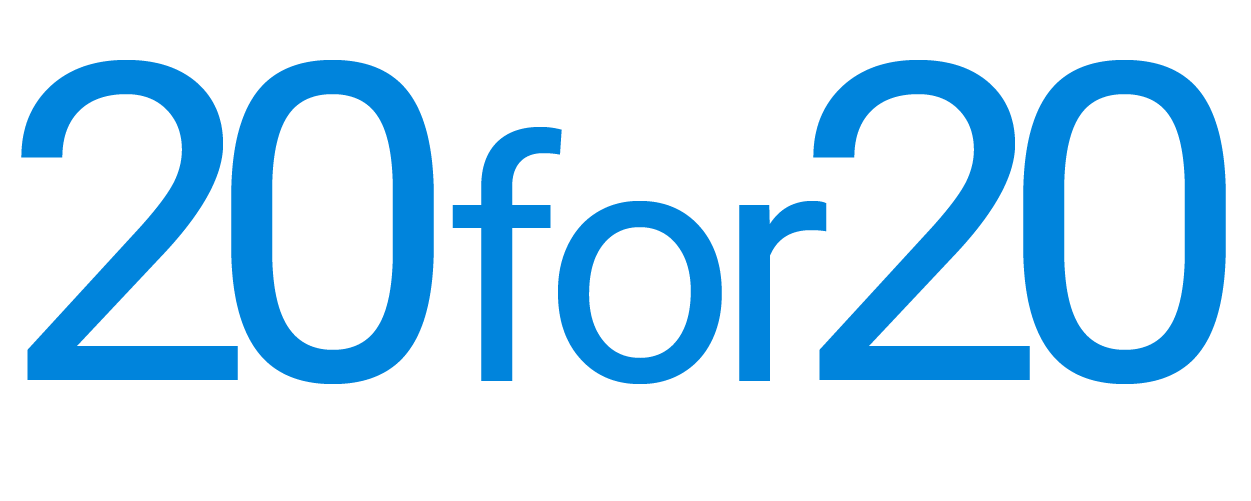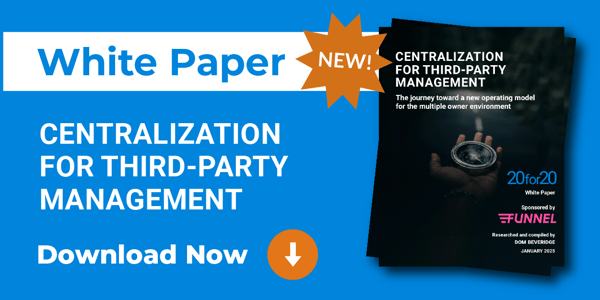
Readers of this blog will know that I frequently study and write about centralization. It has featured heavily in the last four editions of the 20for20 annual survey, and—SPOILER ALERT—it will get more coverage next month when the 2025 edition drops.
But I started noticing something around the middle of 2024 after attending numerous industry conferences and reading the increasing volume of opinions on centralization. The conversation about centralization appeared to be stalling. The conversation on industry panels was looking less and less like the private conversations that I was having with industry leaders. Something important has been missing.
The Story so far
A few years ago, a vanguard of companies, most notably the public REITs, began sharing the progress they were making in developing a new operating model. A combination of new technologies and processes was enabling these companies to replace work previously done at property with a combination of technology and shared services.
Other companies started to follow their lead, redefining their own operating models in a variety of ways, in an industry catch-all trend that we call "centralization." It's a fascinating and important trend, but the current discussion often overlooks perhaps the most important consideration in the future development of centralization: what works for a REIT is unlikely to work for most multifamily organizations.
Readers of this blog will also be familiar with another important trend: with each passing year, multifamily becomes increasingly third-party-managed. The NMHC Top 50 statistics show that every year, fewer and fewer properties are managed by their owners. That critical trend is mostly missing from the industry's conversation about centralization.
That conversation tends to focus on what owner-operators are doing. But that is a decreasing share of the industry, and what works for owner-operators (who have decision-making control of their entire portfolio) is unlikely to work for third-party managers (who don't).
20for20 exists to fill gaps in the industry's understanding of operations and technology, and today, we are releasing a major new piece of research: Centralization for Third-Party Management. The paper is based on deep-dive interviews with leading third-party managers and their institutional clients. It provides a reliable data point on where the majority of the industry stands with centralization.
What We Found
The findings are predictably fascinating. On the positive side, several third-party operators are making rapid progress and can claim that centralization is now firmly part of their operating model. Equally surprising was the number of large operators for whom centralization is currently not a priority. It is hard to see how this does not become a source of relative advantage/disadvantage in the competition for management contracts.
Centralization is hard for this sector. For example, an owner-operator can consider its operating platform holistically and can, for example, redeploy leasing or maintenance resources within a regional cluster of properties, as numerous companies have done. When admin tasks move to shared services, operators can reshuffle teams, sharing a smaller number of resources between properties with centralized support.
For third-party managers, every centralization decision requires a change to the property management agreement (PMA) governing the specific property. That hurdle does not exist for the REITs who have led the charge on centralization. When each decision is contingent on amending a PMA, decisions are rarely made on a portfolio or regional level. Instead—as this research shows—they take a property-by-property framing.
When decisions are about individual properties, centralization becomes an all-or-nothing proposition. A REIT can reshuffle resources between properties. Third-party managers face more of a binary choice: every associate is either 100% assigned to or 100% not assigned to the property. That is a much higher bar for third-party managers to clear as they progress toward the new operating model and—critically—persuade their operating partners to accompany them on the journey.
The Journey Is Well Underway
All of that said, the paper clearly demonstrates how some sophisticated third-party managers are finding solutions to these challenges. These solutions include changing the operations coverage model, redefining the composition of remaining staff when admin tasks are moved to shared services, addressing initial implementation challenges, selecting the right candidates to pilot centralization. Operators are learning through a highly iterative process and have grenerously shared specific learnings in the paper.
I want to thank all 14 third-party managers who participated in this research for being so candid and open about their efforts. I also extend my gratitude to the group of asset managers who provided additional insights that round out the picture. And, of course, I thank my friends at Funnel for sponsoring this important new research. I look forward to the conversation that I feel sure this research will stimulate!
Photo by Ahmed Zayan on Unsplash



